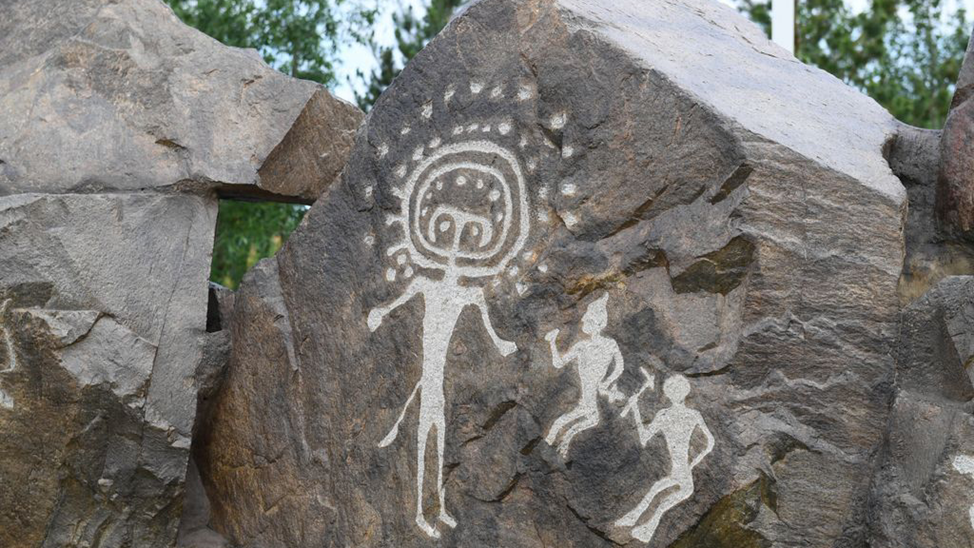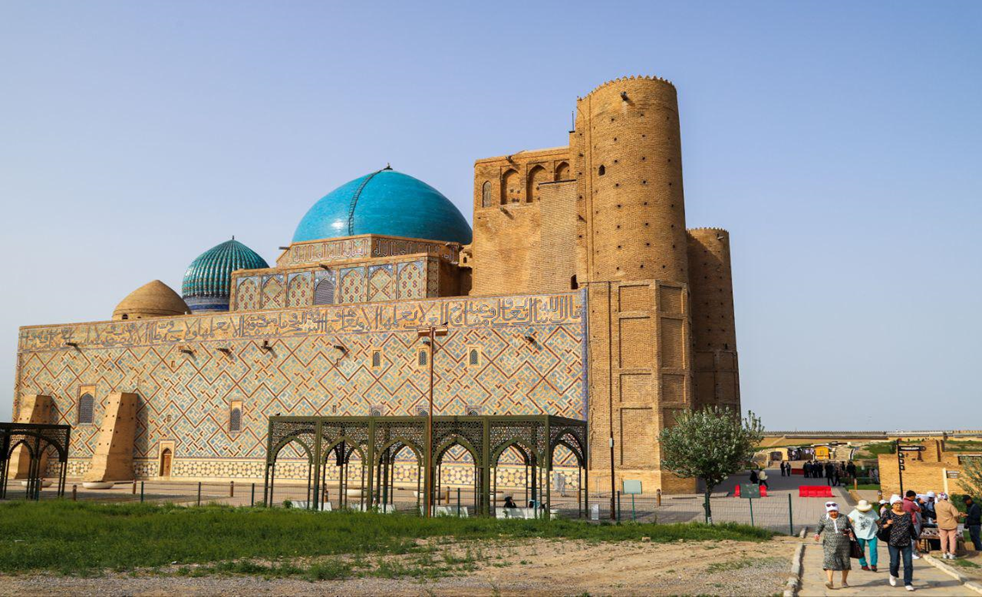From the depths of the history of our people, from father to son, from century to century, we have inherited an invaluable asset: customs, traditions, culture - our spiritual value. Our people, with a high spirit, respecting the traditions of their ancestors and sincerely appreciating accurate facts, considered every mountain range, plain, cave, lake sacred and holy.
The concept of "holy land", "holy place" suggests many thoughts. Sometimes, our people understand the words "holy", "sacred" as "the owner of miraculous powers". The phenomena that we consider sacred are in the special places where we grew up; an honorable, beautiful, supreme object in the minds of people.
There are places that are considered sacred to Kazakhs in general, and places whose names are mysterious, there are even buildings built yesterday, as the same age as our independence.
Among the natural sacred sites are Akmeshit, Kazygurt, Khan Tengri, Charyn Canyon, Zhylagan ata caves, Konyr aulie, etc., if the category of archaeological and architectural monuments includes the Bozok settlement, archaeological complexes Tamgaly, Begazy, Shilikty mounds, Berel, Akyrtas fortress, then the centers of medieval cities and the capital of the Kazakh Khanate – Koylyk, Zhankent, Syganak, Zhent, Saraishyk, Sauran, Otyrar, Sairam are also considered sacred places. As well as sacred places that have become a place of religious and human wishes - the mausoleums of Yasavi, Arystan Baba, Karabura, Ukasha ata, Karashash ana, Ibrahim ata, Baidibek biya, Domalak ana, memorial complexes of Mashhur Zhusup, Abai Shakarim, sacred places associated with the names of historical figures - the mausoleum of Makhambet Utemisuly, Abdigappar and complexes Keiki batyr, mausoleums of Kabanbai batyr, Rayymbek batyr, Yeset Kokiuly, Khanate of Abylai in Kokshetau; holy places associated with historical and political events, such as the house of Akhmet Baitursynov (g. Almaty), the memorial complex "Altyn-Emel" Sh. Ualikhanov v, Bulanta, Anirakai, the place of Orbulak battles, the house "Alash arystary" (Semey), the monuments "Astana-Baiterek", "Kazakh eli", "Defenders of the Motherland" and many other objects are included in the list of national shrines of Kazakhstan.
The main meaning in the definition of holy, sacred land is to promote the awakening of patriotic feelings through deepening knowledge of the native land; understanding, respect, careful attitude, service to the values of the past.
MONUMENTS
Petroglyphs of Tanbala

The Tanbaly petroglyphs are one of the most important and ancient monuments of the Tanbaly Gorge in Zhetysu. It is the first monument of rock art in Central Asia, included in the UNESCO World Heritage List in 2004.
Petroglyphs located in the natural landscape of the Tanbaly Gorge, as well as other monuments that make up a single archaeological complex, currently form the exposition of the Tanbaly Museum-Reserve.
The Tanbaly Gorge is located 170 km northwest of the city of Almaty, in the southeastern part of the Chu-Ili Mountains of the Almaty region.
The Tanbaly archaeological complex has about a hundred monuments of different times, settlements, tombs, rock paintings, covering the period from the Bronze Age to the middle of the XIV-XIII centuries BC and to the turn of the XIX-XX centuries. They can be divided into the following groups:
The first group consists of 111 rock carvings, which are sketches and unfinished drawings of the Bronze Age, and individual images of animals are very large, up to 60-70 cm.
The rock paintings of the second group are the clearest and most picturesque. There are 432 ancient rock carvings here. The Bronze Age paintings were very large, deep and carefully carved. This group is dominated by petroglyphs of the Middle Bronze Age, which are very ancient and the most expressive of the known rock carvings. Only here you can see the exact data.
The third group consists of 444 rock carvings. It is obvious that most of these rock carvings date back to the Saka times.
The fourth group contains more than 700 rock paintings. They belong to the Early Iron Age, the Middle Ages and the New Period (17th-19th centuries). There are 7 "sunheads" depicted here, and below - 10 warriors, a woman in labor and praying people.
In the fifth group there are more than 1000 rock paintings. These include several large panels depicting Bronze Age animals (bull with lines on the body, wild boars, horses), a camel-drawn cart, as well as chariots and "sun-headed deities". In total, 11 images of god have been preserved on the rocks.
The petroglyphs of the sixth group are located at a considerable distance from the central zone of the gorge. Here, petroglyphs dating back to the Turkic era are quite unique and are a special rock art of that period.
The petroglyphs of the seventh group include more than 150 rock carvings from the Turkish period in Tanbali.
The world-famous archaeological complex has become a national symbol of Kazakhstan, as it is unique in its composition and has no analogues in the world.
MAUSOLEUMS
Mausoleum of Khoja Ahmed Yasawi
 The mausoleum of Khoja Akhmet Yasawi is an outstanding monument of medieval architecture, erected at the end of the XIV century by order of the ruler of Central Asia Amir Temur. It is installed on the grave of the famous ancient Turkic poet, preacher of Sufi teachings Akhmet Yasavi, who lived in the XII century.
The mausoleum of Khoja Akhmet Yasawi is an outstanding monument of medieval architecture, erected at the end of the XIV century by order of the ruler of Central Asia Amir Temur. It is installed on the grave of the famous ancient Turkic poet, preacher of Sufi teachings Akhmet Yasavi, who lived in the XII century.
The mausoleum, erected in honor of the great poet Khoja Akhmet Yasawi, is located in the city of Turkestan.
The mausoleum of Khoja Akhmet Yasawi, which is the spiritual center of the Turkic world, is a unique work of architectural art, which took its rightful place in the UNESCO World Heritage List in 2003.
The building is often called an architectural complex. The masters combined 35 rooms of various sizes into a single complex. The height of the building is 39 m, which is equivalent to the height of the current ten-storey building. Along with the amazing architecture of the mausoleum, ancient objects are kept here, including a large picturesque taykazan, bronze lamps, flags, patterned doors, tombs, etc., collected by craftsmen of the XIV-XV centuries.
The mausoleum of Khoja Akhmet Yasawi is a grandiose portal domed structure. Its width is 46.5 m and its length is 65 m. The building has a huge portal and several domes. 35 rooms for various purposes have been built around its central hall. The height of the building calculated to the top of the dome of the prayer comanche, or "jamagatkhana" (called "boiler room" or "kazandyk", since there is a cauldron) is 37.5 meters. The thickness of the outer walls is 1.8-2 m, the thickness of the boiler walls is 3 meters.
The mausoleum of Khoja Ahmed Yasawi is distinguished by the fact that it is a complex complex structure consisting of the following premises for performing religious and ceremonial, religious and educational, ritual activities:
1. Prayer house ("Kazandyk")
2. The Tomb
3. Mosque
4. Library
5. The Grand Palace
6. The Small Palace
7. Dining room
8. The well
9. Leisure rooms (a small room designed for students to live in).
The total area of the lands occupied by the museum-reserve is 90 hectares. The museum-reserve, together with the mausoleum of Khoja Akhmet Yasawi, includes the best monuments of archeology, history, architecture and fine arts: Bolshoy kyluet (underground mosque, XII century.), octagonal mausoleum (XIV-XVI centuries.), mausoleum of Ulykbek's daughter, wife of Abilkhair Khan Rabiga Sultan Begim, Oriental bath (XVI-XVII centuries.), mausoleum of Yessimkhan, Juma mosque, etc.




